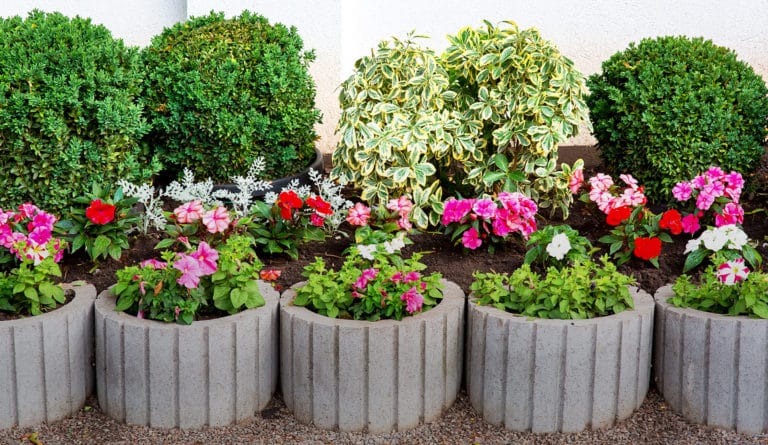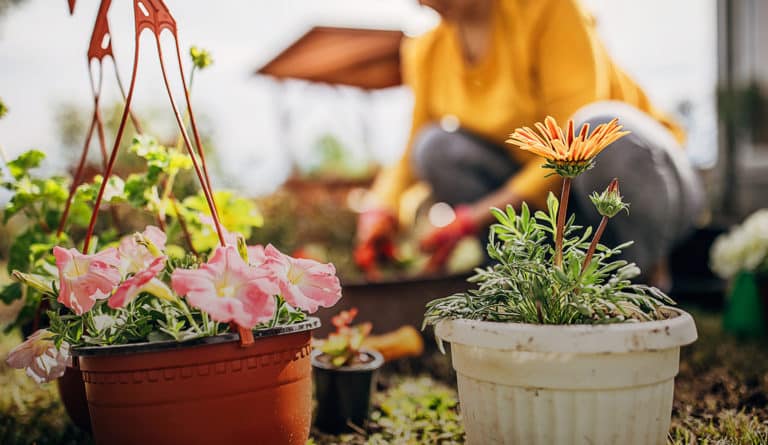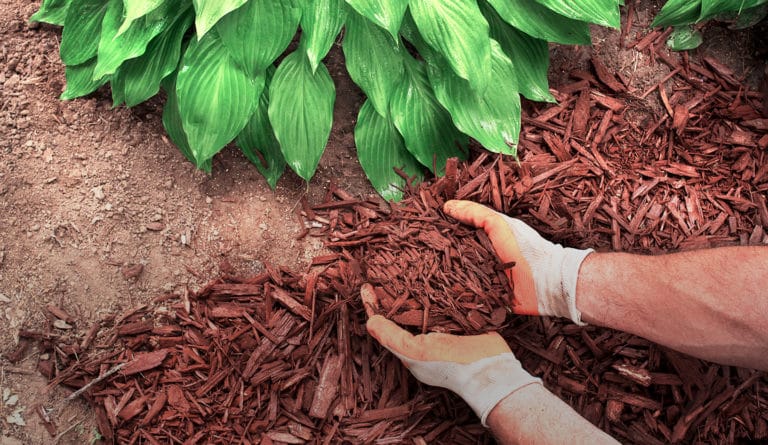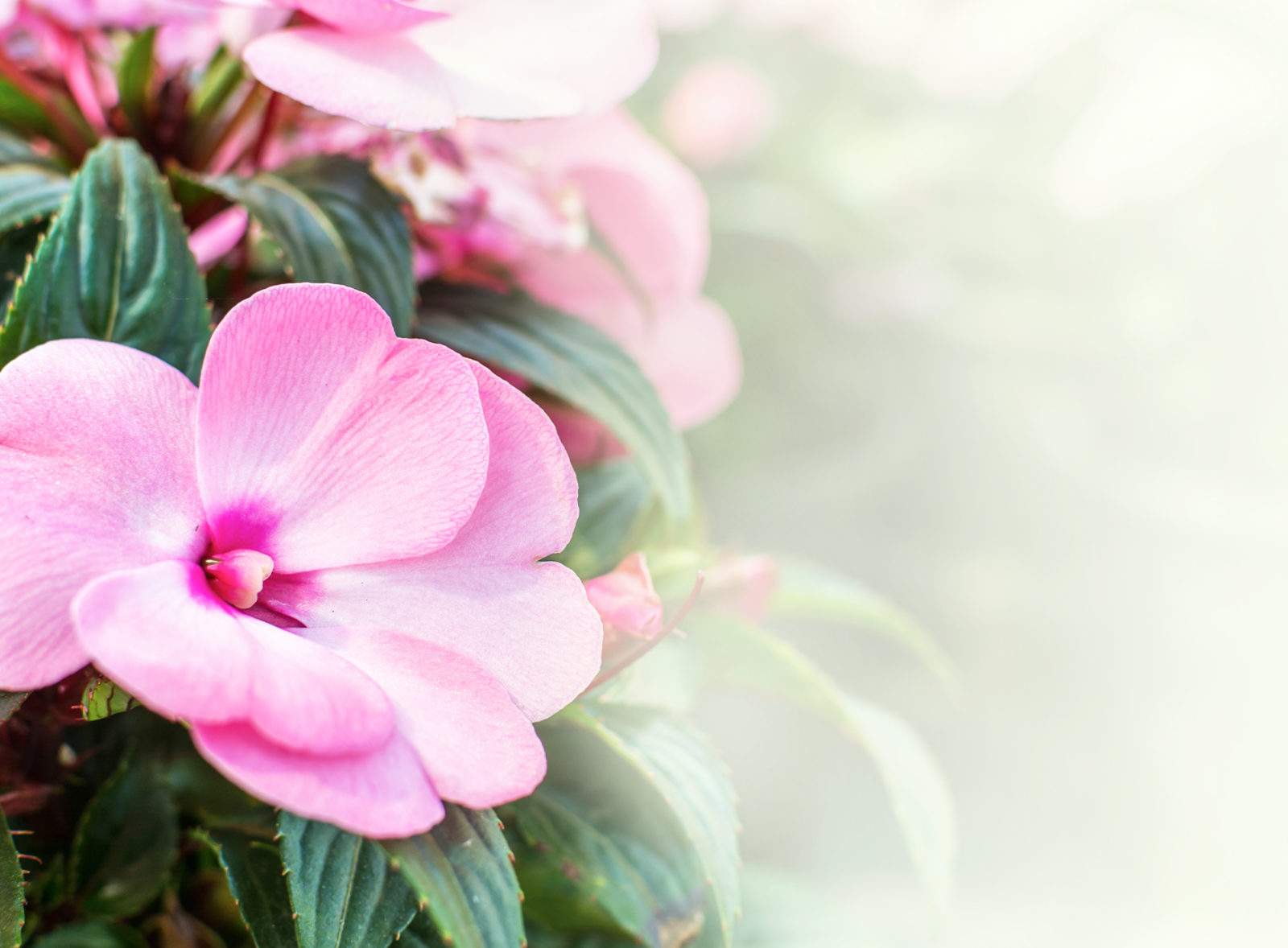
impatiens
aka impatiens walleriana
Bright, colourful and fast growing, in even the shade. Impatiens have the power to pretty things up nearly everywhere. Garden beds, planter boxes and even hanging baskets.
variations
Standard impatiens: Impatiens walleriana New Guinea impatiens: Impatiens hawkeri
light
shade or partial sun
Unlike most flowers, Impatiens grow well in shady conditions. The exception are the New Guinea varieties that prefer partial sun. If you can, pick a spot that’s protected from the wind.
water + feeding
thirsty
They like moist soil so keep the water coming. Two inches a week is a general rule. That’s an hour of sprinkler time if there’s no rain. Be careful not to overwater. Long periods of wet soil encourages mold and rot. A layer of mulch helps the soil retain moisture and protect impatiens from wilting in summer heat. Impatiens in containers need more regular watering than ones planted in your garden.
toxic
non-toxic
safe for people and pets.
size
really small to small-ish
Dwarf varieties only grow 6 inches. While bigger types can grow to 2 feet high with the proper care.
pro tip
dead heads
“Dead head” your Impatiens for continuous blooms. When you see a blossom start to brown and wither, pinch it off and toss it in your yard waste. This will encourage the plant to make more beautiful new flowers.
fun fact
so sweet!
In many cultures, Impatiens are symbolic of motherly love. But there are some cultures where the flower represents impatience, because the plant eagerly disperses seeds.
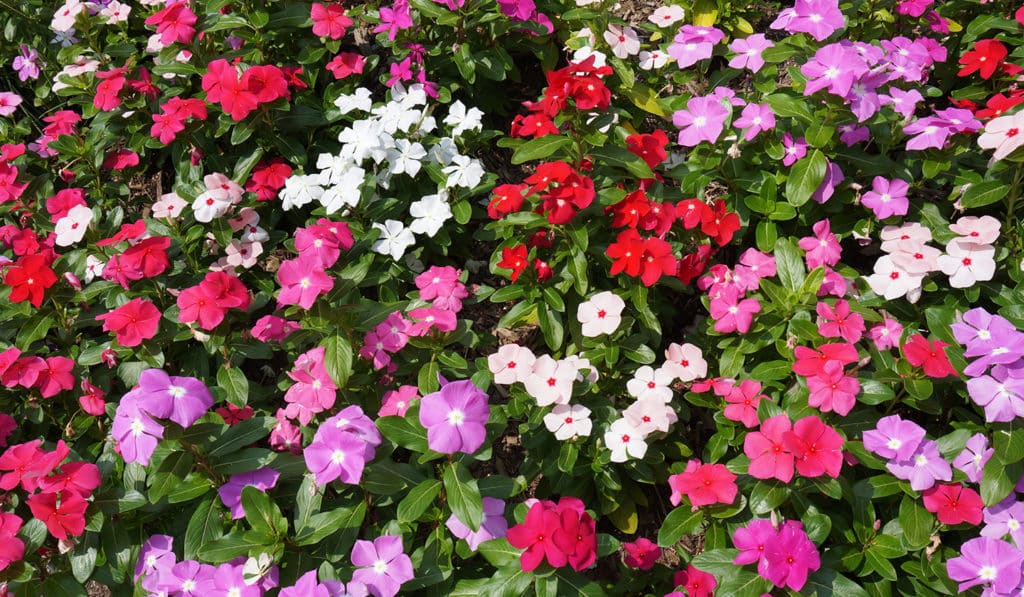
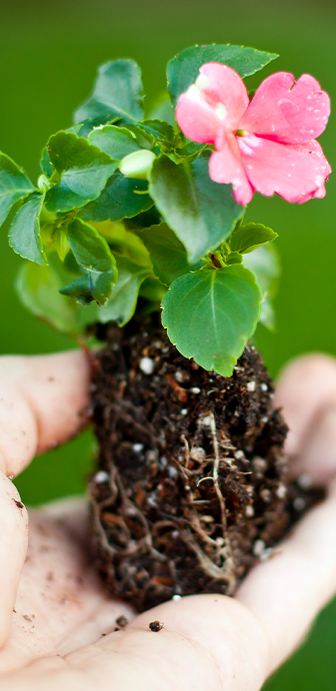
beyond the basics
-
soil & potting
Grow impatiens in nutrient-rich soil with good drainage. Adding peat moss to clay soil will help. If you’re planting in a container such as a window box or hanging basket, use a good-draining potting soil like Miracle-Gro® potting mix.
Enrich your soil with nutrients. Fertilize your soil with aged compost before planting. This organic matter will provide your impatiens the extra nutrients they need to thrive.
Plant food makes a big difference. Add a slow-release granular plant food at planting time, like Miracle-Gro® Shake ‘n Feed All Purpose Plant Food. Throughout the growing season, add a water-soluble plant food every two weeks such as Miracle-Gro® Water Soluble Bloom Booster. Use a water-soluble plant food every two weeks according to the instructions. You can also reapply the slow-release plant food midway through the season. Let’s boost those blooms!
Planting Impatiens close together encourages them to grow taller. Space them about six inches apart. Not any closer, because the crowding could encourage mold to grow. If you want your Impatiens to act like more of a sprawling ground cover, space them further apart, about a foot.
-
companion planting
Impatiens are good in a veggie garden because their cheery flowers attract pollinators. They also make excellent companions for other plants and flowers like Asparagus fern, Begonias, Bacopa, Coleus, Fuchsia, Sweet potato vine and White Baby’s Breath.
-
blooms
Impatiens provide a bounty of brightly colored blooms, even in shady areas. Colours include white, red, pink, violet, coral, purple, and yellow.
-
pest control
Impatiens are fairly pest resistant, but you may get Aphids (yellowish-green clusters of small insects) or Red Spider Mites (tiny red bugs and white dusty substance under leaves). Fight these pests with a gentle insecticide like Ortho® Bug B Gon ECO Insecticidial Soap. For prevention, try planting aromatic herbs nearby, like chamomile, garlic or rosemary.
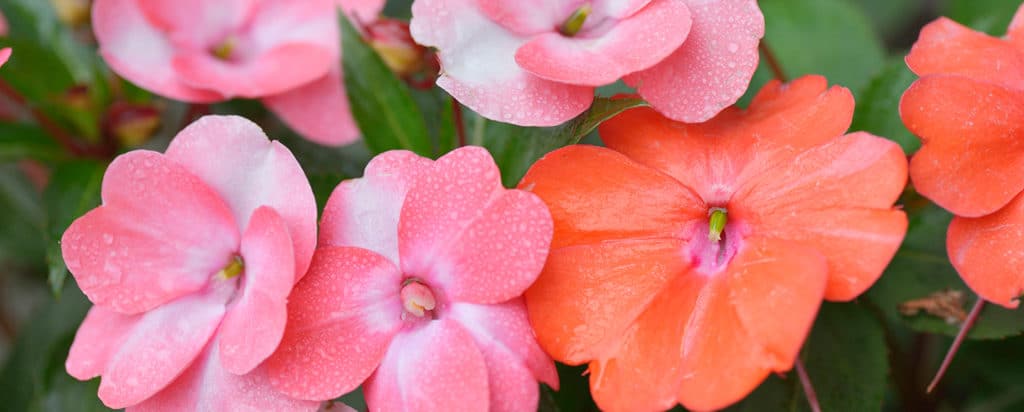
troubleshooting
-
what’s with the shrivelling blooms?
Impatiens blooms do have a life cycle and wilt naturally, but if all the blooms go suddenly at the same time, it’s probably a combination of too much heat and sun, and not enough water. Impatiens prefer shady, partial sun locations that shield them from peak daytime sun. Impatiens transplant well if you use lots of water, so move them to a shadier space.
-
why are my plants wilting?
Not enough water. Impatiens want consistently moist soil that doesn’t get soggy. Leaf drop and bud drop are other signs of drought stress.
-
what are these ringed spots?
Probably the Impatiens Necrotic Spot Virus. This incurable virus is spread by bugs known as Thrips. Unfortunately, there is no treatment. Stop the spread by uprooting and tossing the plant in a yard waste bag. Once it’s contained you can start over.
-
why is there powdery white stuff on the leaves?
It’s probably Downy Mildew, which can causes leaves to shrivel. It begins as a yellow or white stippling on the underside of the leaves. Prune infected leaves on generally healthy plants, and remove badly infected plants entirely. For maintenance, keep your beds clear of damp, rotting plant material.

impatiens
aka impatiens walleriana
Bright, colourful and fast growing, in even the shade. Impatiens have the power to pretty things up nearly everywhere. Garden beds, planter boxes and even hanging baskets.
variations
Standard impatiens: Impatiens walleriana New Guinea impatiens: Impatiens hawkeri
light
shade or partial sun
Unlike most flowers, Impatiens grow well in shady conditions. The exception are the New Guinea varieties that prefer partial sun. If you can, pick a spot that’s protected from the wind.
water + feeding
thirsty
They like moist soil so keep the water coming. Two inches a week is a general rule. That’s an hour of sprinkler time if there’s no rain. Be careful not to overwater. Long periods of wet soil encourages mold and rot. A layer of mulch helps the soil retain moisture and protect impatiens from wilting in summer heat. Impatiens in containers need more regular watering than ones planted in your garden.
toxic
non-toxic
safe for people and pets.
size
really small to small-ish
Dwarf varieties only grow 6 inches. While bigger types can grow to 2 feet high with the proper care.
pro tip
dead heads
“Dead head” your Impatiens for continuous blooms. When you see a blossom start to brown and wither, pinch it off and toss it in your yard waste. This will encourage the plant to make more beautiful new flowers.
fun fact
so sweet!
In many cultures, Impatiens are symbolic of motherly love. But there are some cultures where the flower represents impatience, because the plant eagerly disperses seeds.
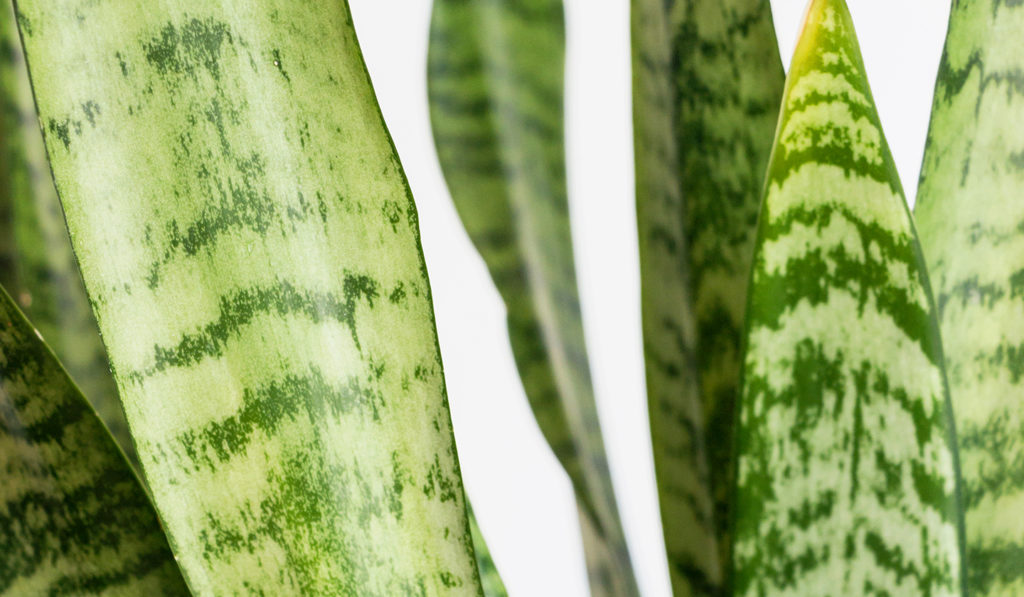
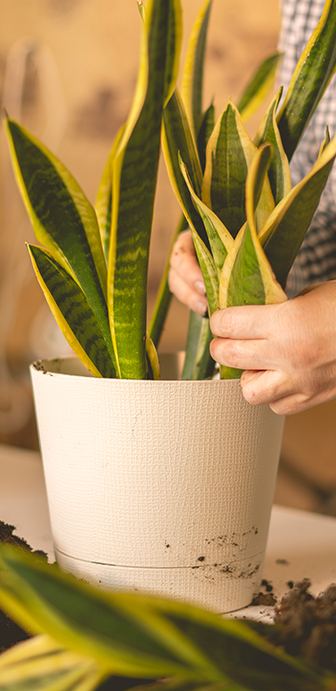
beyond the basics
-
soil & potting
It’s a desert plant, so use a light, well-draining potting soil like Miracle-Gro Cactus, Palm and Succulent Potting Mix. Or, use regular potting soil and add some potting sand or perlite. A layer of sand on the top will help prevent rot. Ensure the pot has good drainage. Snakes should never sit in water. Empty drainage trays if you see water collecting.
-
when to repot
Every 2 to 3 years in the Spring, especially in the earlier years. Increase the pot size by 2 inches each repotting. In later years you can replace the top couple inches of soil instead of completely repotting. Snake growing too fast? Slow the growth by trimming the roots.
-
propagation
Grab a sharp knife or scissors, find one of the healthiest leaves, and cut it off at the base of the plant. Then cut the leaf into multiple horizontal strips (about 3 inches each). Let the ends dry for two days then put them in water to stimulate root growth. This step could take 2 to 3 weeks. When you’ve got roots, you’re ready to pot.
-
pest control
Mealybugs are most common. When you do your regular dusting, inspect the leaves. Check out our Pest control section in Plant 101 for how to identify and deal with pests on your plant!
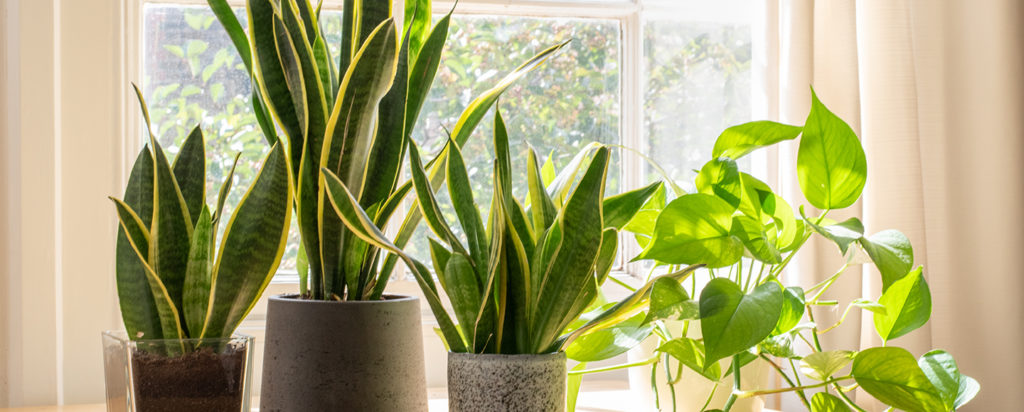
troubleshooting
-
why are the leaves falling sideways?
Multiple possibilities. All easily fixed. Firstly, this may not be a problem at all. Overly mature leaves naturally fall away to make room new growth. But if many leaves are falling over before their time, it’s probably over or under watering. If the soil is bone dry, add a moderate amount of water for a few days in a row. Then be more diligent with your watering routine. If the soil is soaked, check your drainage and let the soil fully dry before starting a better routine. Light issues: Snake plants do well in low light but if they’re getting no light leaves may start to keel over. Move into some nice, bright, indirect light. Other causes? Maybe your Snake plant has outgrown its pot. This can cause it to become root-bound. It’s time to repot in something at least 2 inches wider.
-
why do I have yellowing leaves?
Probably overwatering. Are the leaves also a bit mushy? These are signs of root rot. Not to worry, when caught early this is easily fixable. Reduce watering and ensure the soil dries out before watering. Check your pot’s drainage. Does it have a hole that allows excess water to escape? Help things dry by poking holes in the soil. This will get oxygen to the roots. You can also put the pot (with drainage holes) in a tray that’s lined with a layer of dry soil. It acts like a sponge to draw out extra moisture. Now, let’s check for root rot. Dig down and cut out any that look affected. If things are really bad, consider repotting entirely with new soil. For more information check out our Plant 101 section.
-
why does this snake have wrinkled leaves?
Under-watering. Check the soil. It’s probably bone dry. Instead of dousing it all at once. Give your Snake plant a medium amount of water three days in a row. Nice and easy. Make sure it’s never sitting in pools of water. Those droopy leaves should rebound by day three.

impatiens
aka impatiens walleriana
Bright, colourful and fast growing, in even the shade. Impatiens have the power to pretty things up nearly everywhere. Garden beds, planter boxes and even hanging baskets.
variations
Standard impatiens: Impatiens walleriana New Guinea impatiens: Impatiens hawkeri
light
shade or partial sun
Unlike most flowers, Impatiens grow well in shady conditions. The exception are the New Guinea varieties that prefer partial sun. If you can, pick a spot that’s protected from the wind.
water + feeding
thirsty
They like moist soil so keep the water coming. Two inches a week is a general rule. That’s an hour of sprinkler time if there’s no rain. Be careful not to overwater. Long periods of wet soil encourages mold and rot. A layer of mulch helps the soil retain moisture and protect impatiens from wilting in summer heat. Impatiens in containers need more regular watering than ones planted in your garden.
toxic
non-toxic
safe for people and pets.
size
really small to small-ish
Dwarf varieties only grow 6 inches. While bigger types can grow to 2 feet high with the proper care.
pro tip
dead heads
“Dead head” your Impatiens for continuous blooms. When you see a blossom start to brown and wither, pinch it off and toss it in your yard waste. This will encourage the plant to make more beautiful new flowers.
fun fact
so sweet!
In many cultures, Impatiens are symbolic of motherly love. But there are some cultures where the flower represents impatience, because the plant eagerly disperses seeds.
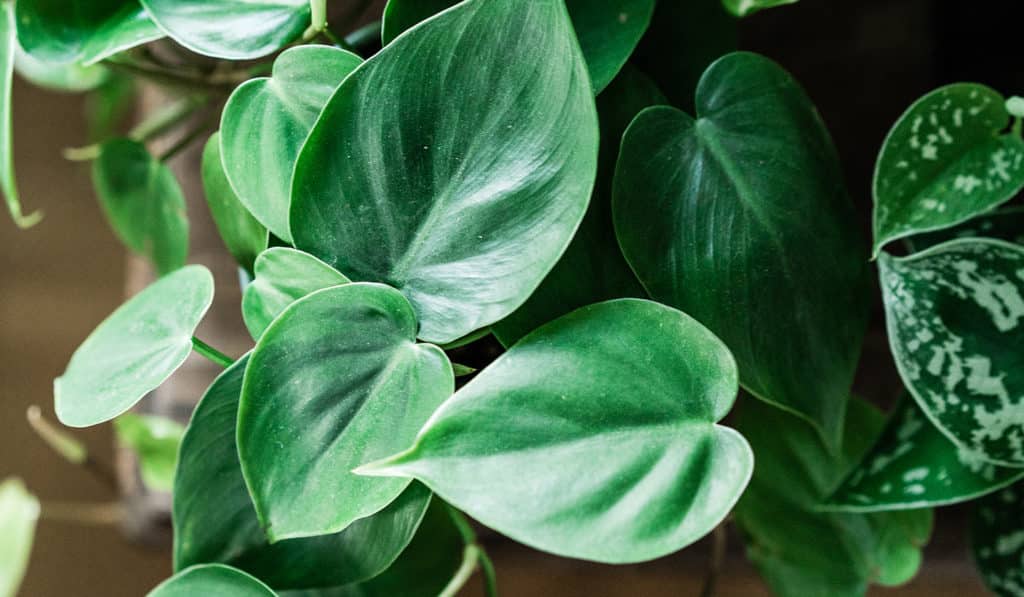
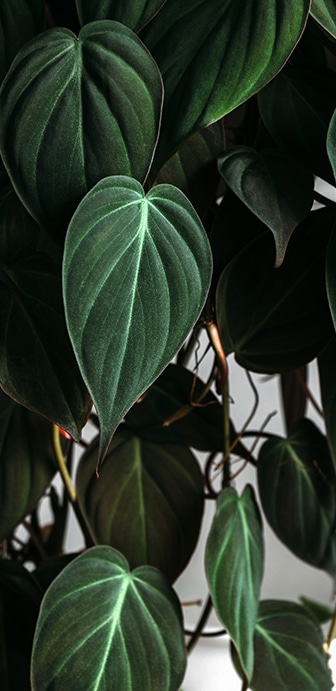
beyond the basics
-
soil & potting
Use a rich, well-draining, indoor potting soil, like Miracle-Gro® Indoor Potting Mix. Ensure your pot has good drainage. If you notice water pooling in the drainage tray, empty it.
-
when to repot
Repot every 2 years in the spring, especially with younger plants. Increase pot by 2 inches every time. If dealing with a more mature, fully grown plant you can just replace the top few inches of soil.
-
propogation
If you have a node or aerial root this plant is very easy to propagate. Cut just below the node and remove the lower leaves. Put in water and watch the roots grow in just a few short weeks! For more information on propagation check out our propagation project page!
-
pest control
Prone to mealybugs. Check the underside of leaves regularly when cleaning. Check out our Pest control section in Plant 101 for how to identify and deal with pests on your plant!
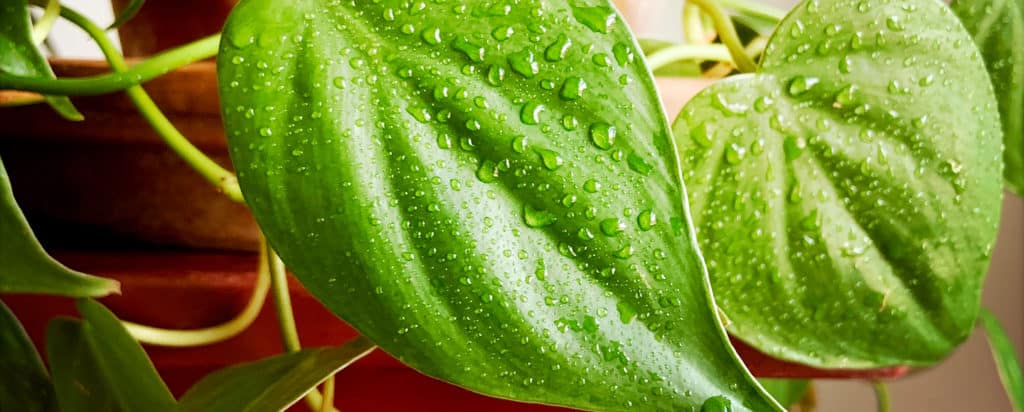
troubleshooting
-
yellowing lower leaves?
Low temperatures or drafts are probably the cause. Try moving your plant to a new location where it is clear of any drafts. Philodendrons like it warm, between 60 and 75 F (16 and 24C) It could also be underwatering or under fertilizing. Ensure you’re watering regularly when the top inch of soil becomes dry.
-
leaves dropping?
Probably a cold draft. Move to warm location that’s clear of any drafty windows or the air conditioning vent. It’s a hardy plant but still likes temps between 60 and 75 F (16 and 24C)
-
brown edges on the leaves?
Various. The soil could be too dry. Water regularly when the top inch of soil gets dry. Water until the soil is moist, but not soggy. If the air feels dry and the temp is over 75F (24C,) mist the leaves regularly. Consider a humidifier, or put the pot on a pebble-filled tray of water (making sure the pot is not touching the water). Philodendrons don’t like cold drafts, so this could also be the problem. Move away from cold windows or AC vents.

impatiens
aka impatiens walleriana
Bright, colourful and fast growing, in even the shade. Impatiens have the power to pretty things up nearly everywhere. Garden beds, planter boxes and even hanging baskets.
variations
Standard impatiens: Impatiens walleriana New Guinea impatiens: Impatiens hawkeri
light
shade or partial sun
Unlike most flowers, Impatiens grow well in shady conditions. The exception are the New Guinea varieties that prefer partial sun. If you can, pick a spot that’s protected from the wind.
water + feeding
thirsty
They like moist soil so keep the water coming. Two inches a week is a general rule. That’s an hour of sprinkler time if there’s no rain. Be careful not to overwater. Long periods of wet soil encourages mold and rot. A layer of mulch helps the soil retain moisture and protect impatiens from wilting in summer heat. Impatiens in containers need more regular watering than ones planted in your garden.
toxic
non-toxic
safe for people and pets.
size
really small to small-ish
Dwarf varieties only grow 6 inches. While bigger types can grow to 2 feet high with the proper care.
pro tip
dead heads
“Dead head” your Impatiens for continuous blooms. When you see a blossom start to brown and wither, pinch it off and toss it in your yard waste. This will encourage the plant to make more beautiful new flowers.
fun fact
so sweet!
In many cultures, Impatiens are symbolic of motherly love. But there are some cultures where the flower represents impatience, because the plant eagerly disperses seeds.
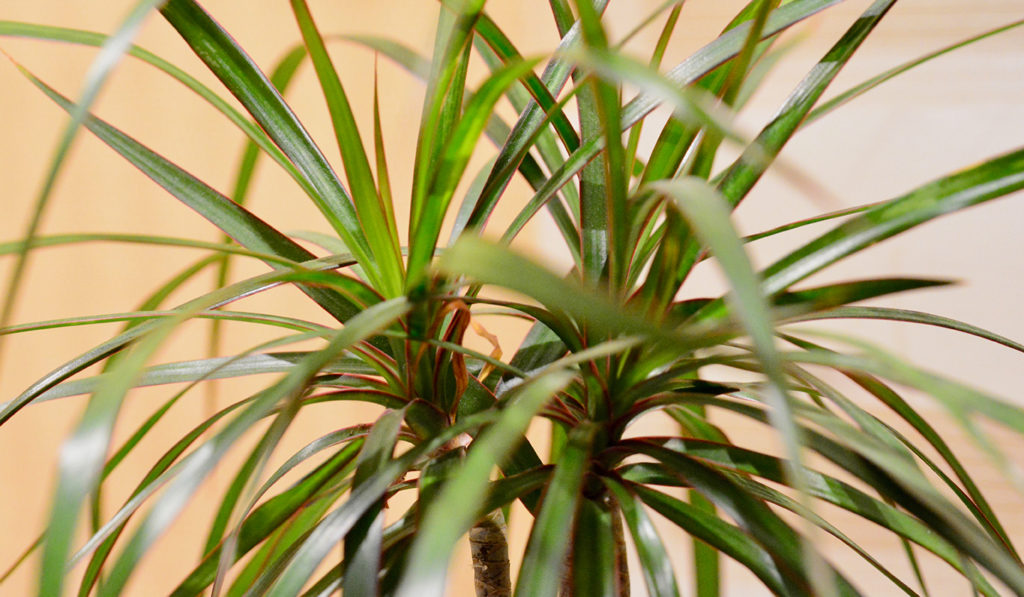
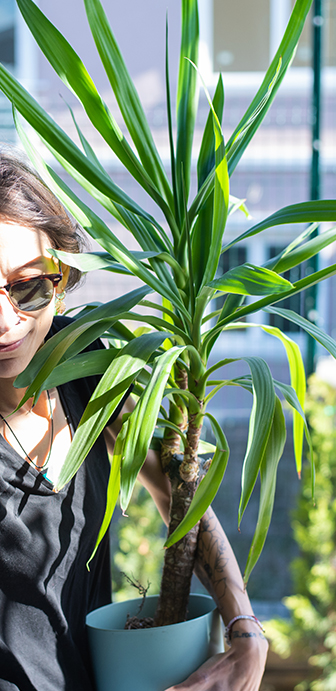
beyond the basics
-
soil & potting
This plant likes a light, well-draining soil like Miracle-Gro Cactus, Palm and Succulent Potting Mix. Or add some potting sand or perlite to regular potting soil. A layer of sand on the top will also help prevent rot. You pot must have good drainage and don’t let Dracaena sit in water. If you see water collecting in the drainage tray, dump it.
-
when to repot
Every 2-3 years in the Spring, especially in the earlier years. Increase the pot size by 2 inches each repotting. When your Dracaena is all grown up, you can get away with just replacing the top few inches of soil.
-
propagation
Cut a stem off the plant, and remove the lower leaves. Put the cutting in water to stimulate root growth. Then cut a 2 to 4 inch stub off the bottom of a stem and insert it halfway into a dry potting mix like Miracle-Gro Cactus, Palm and Succulent Potting Mix.
-
pest control
Most common pests are scale insects and mealybugs. Check under leaves when you’re dusting. See our Pest control section in Plant 101 for how to identify and deal with pests on your plant!
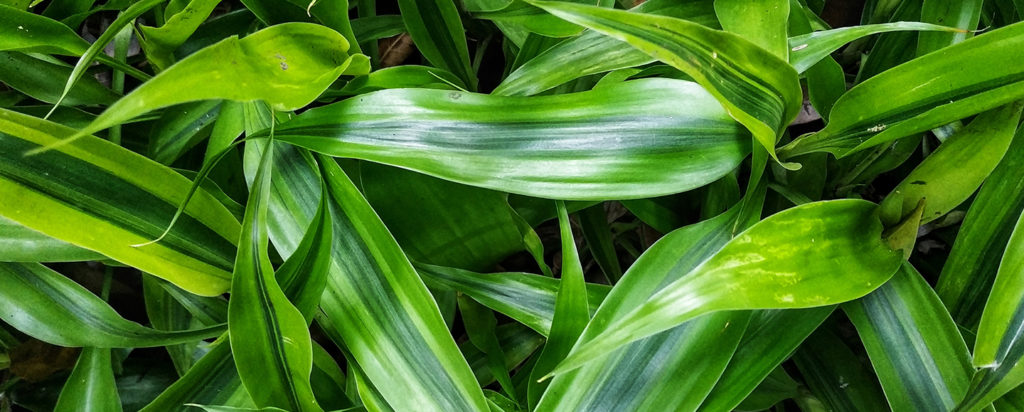
troubleshooting
-
brown tips on leaves?
Not enough water, or dry air. Most common in winter when furnaces are running.
Check soil more often and water when mostly dry. Add a humidifier to the room. Mist regularly. Put the pot on a pebble-filled tray of water. Consider moving to a room with more humidity like bathroom or kitchen.
-
yellowing leaves at the base?
Not really a problem! This is natural. That’s how Dracaenas grow. Older leaves fall off to allow for new ones. You can also gently pull off yellowed leaves. If new leaves are growing, everything is fine.
-
wilting leaves?
Overwatering or possible root rot. Wait until soil is medium dry between watering and ensure the pot has good drainage. If the wilt is bad, allow the soil to completely dry before watering. If the problem persists, check for root rot and remove any affected roots. Other moisture control techniques: Poke holes in soil to let oxygen at the roots. Put the pot (with drainage holes) in a tray lined with dry soil. Or go for a total do-over, and repot with a soil that’s formulated for drainage like Miracle-Gro Cactus, Palm and Succulent Potting Mix. For more information check out our Plant 101 section.
-
soft discoloured stems?
Overwatering causing root and stem rot. Cut back any soft, rotting stems. Remove your Dracaena from the pot and cut away any black, mushy roots. Get a sterilised new pot and start over. If the roots are all mush, you can still save your plant baby! Propagate from the top of the plant.
-
plant not growing?
Not enough light. Dracaena is cool hanging out in low light corners of your house, but it takes brighter (indirect) light to make it grow. This gives you the power to control the height of your plant! When you’re at the right height, move to a shadier spot.
